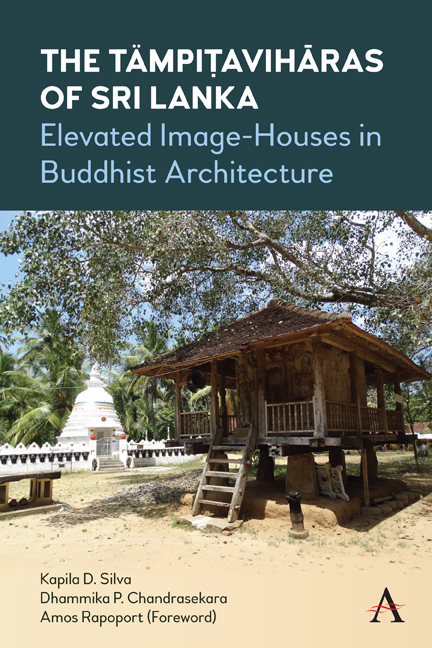Foreword
Published online by Cambridge University Press: 16 December 2021
Summary
The title of this book might suggest that it is a specialized monograph on a specific building type – the ṭämpiṭavihāra (image-house) – in a particular place (Sri Lanka). It is, of course, that. However, by approaching the topic in an extremely thorough and multifaceted way, it manages to transcend the genre, which leads to three rather more general outcomes. One of these bears indirectly a method, not explicitly but by providing an example of good research.
The other more general outcomes are conceptual and provide both suggestions and material for further research. The study as a whole provides a good example of the importance of thorough research, showing that it may take time. It emphasizes the importance of a thorough understanding of built environments rather than the superficial, personal, purely visual judgements common in mainstream architecture and architectural criticism, typically illustrated with just photographs. In this case, there is a good use of photographs, drawings, and conceptual diagrams, the importance of which I have long emphasized. These greatly clarify many of the findings.
The research involves detailed historical, spatial (site and buildings), symbolic, iconographic, materials, construction, and behavioural aspects. It thereby encompasses the organization of space, time, meaning, and communication, a useful way of conceptualizing the built environment.
The thorough analysis of a small, apparently simple building type, the image-house in Sri Lanka and its rather unique construction shows how it is able to embody important aspects of Buddhism and can communicate many aspects of the Buddhist worldview. The communication of complex meanings such as the distinction between the sacred and the profane, and among degrees of sanctity, is achieved in a number of ways, using a variety of means, including raising the building on stone pillars, the location of the building on the site, iconography, and circulation. This re-emphasizes the important role of meaning in the built environment.
Conceptually this is the first (in fact only) study of which I know of the operation of the ‘model with variations’ in all aspects of a single building type. It provides evidence, documentation, and data (including the students’ very useful measured drawings in Part II).
- Type
- Chapter
- Information
- The Tämpitaviharas of Sri LankaElevated Image-Houses in Buddhist Architecture, pp. xi - xiiPublisher: Anthem PressPrint publication year: 2021



